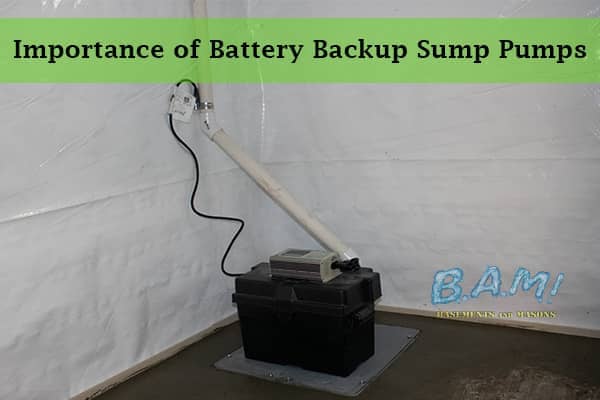The Only Guide for Best Basement Waterproofing
The Only Guide for Best Basement Waterproofing
Blog Article
Facts About Best Basement Waterproofing Uncovered
Table of ContentsIndicators on Best Basement Waterproofing You Need To KnowLittle Known Facts About Best Basement Waterproofing.How Best Basement Waterproofing can Save You Time, Stress, and Money.The Definitive Guide for Best Basement WaterproofingGetting My Best Basement Waterproofing To Work
usages excavation techniques toward the bottom of the framework's foundation. includes getting rid of moisture after it has entered the basement. AdvantaClean's experienced specialists and professionals will certainly find the water resource. If wall surface or slab fractures are existing, we will certainly inject polyurethane and epoxies into the cracks and seal the concession, avoiding additional wetness from going into.
If there's condensation on the exterior of the foil, you have high humidity in your basement. If the foil has condensation on the inside surface (next to the wall surface), the soil around your house might be naturally damp from a high water table or bad dirt drainage.
You can waterproof simply your interior wall surfaces, which may fix the trouble. Once they dry out, they adhere completely to concrete and stonework walls.
Some Ideas on Best Basement Waterproofing You Should Know
Concrete water-proof layers can not be used to formerly repainted surface areas; check the label. Understood as densifiers, they are appropriate only for walls that have not been repainted or secured.
You brush, roll, or spray it on much more heavily one gallon covers simply 75 square feet, not the 300 square feet regular with conventional paint. Water-proof paint is fine for DIY application. You can use it over painted surface areas, and paint over it once it's treated (one gallon costs $37).
It can set you back $10,000 to $15,000, depending on the work needed. Outside waterproofing entails excavating all around the home to the full deepness of the foundation wall surfaces, after that mounting a water resistant coating or membrane topped by drain panels.
A cellar without waterproofing is kind of like that. Your basement does not desire to go through a downpour without correct protection simply as much as you do not desire to.
Our Best Basement Waterproofing Statements
But if you've done your study, you would certainly recognize there are two kinds of waterproofing: exterior and interior. It can get puzzling what they both mean, which one's a better financial investment, and what will actually maintain the water out. Do not worry, we placed with each other this blog site to easily define both approaches for you and discuss the pros and cons of each.
Exterior waterproofing is a waterproofing technique that involves securing your home from the exterior. It's sort of like a moat around a castle. It entails excavating a trench around your whole home to the foundation (about 8 to 10 feet down). The foundation walls are then cleansed, secured, and covered with a water-proof membrane layer or sealant.
The 8-Minute Rule for Best Basement Waterproofing
It's a more engaged process that requires excavating up your yard, which is expensive and time-consuming. Exterior waterproofing includes removing every little thing surrounding your house, including porches, driveways, walkways, landscaping, air conditioner click for more systems, decks, and more. If any of the work was done improperly and water is still entering your basement, there isn't much you can do to fix or fix it.
Inside cellar waterproofing involves waterproofing from the inside. Any water that leaks into your cellar is redirected prior to it touches your floor.
It's an effective technique to water resistant your cellar - Best Basement Waterproofing. The drawback of interior cellar waterproofing mostly concerns the installation process. This technique calls for saved products, furnishings, and integrated shelving or cabinets to be moved from touching the cellar wall surfaces. And throughout installment, your cellar can't be utilized. The greatest distinction in between the 2 approaches is this: Outside waterproofing is a preventative remedy and indoor waterproofing is a restorative remedy.
Some Known Questions About Best Basement Waterproofing.
In conclusion, outside and indoor cellar waterproofing are both reliable approaches of securing your home from water see page damage. Outside waterproofing produces a barrier that protects against water from entering your home, while interior waterproofing redirects water that does enter your home. And it is very important to note that exterior waterproofing is a pricey and turbulent installment process when compared to indoor waterproofing.
Whichever approach you pick, make sure you choose a dependable and trustworthy professional for the work. If you have any inquiries concerning cellar waterproofing, please get to out to us.
You can submit our type right here, begin a chat in the bottom right-hand edge, or call us at 1-800-827-0702.
Report this page